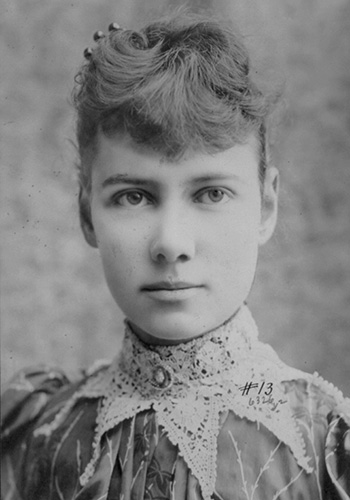Throughout the first half of the nineteenth century, the mentally ill were viewed and treated like degenerates or social outcasts. Many lived in almshouses, or homes for the poor, or jails, out of the public’s eye. In 1841, a young schoolteacher named Dorothea Lynde Dix visited a jail in Cambridge, Massachusetts. She observed mentally ill inmates chained naked to stone-cold walls in cells without ventilation or heat. Dix’s experience drove her to dedicate the rest of her life to improving the treatment of the mentally ill.
She gained the attention of Massachusetts state lawmakers, who authorized funds to improve the conditions she exposed; she also traveled the country conducting several statewide investigations on the mental health situation inside jails and almshouses. Dix convinced state legislatures and Congress to fund the construction of mental hospitals in the form of grand structures set on sprawling grounds, which were viewed as more therapeutic for patients. Straitjackets were to be replaced by farmwork and recreation.
Directions
Examine the image and answer the questions in the boxes below.
Bird's-eye view of the city of Raleigh, North Carolina, 1872. Dorothea Dix Hospital. Library of Congress
Questions
Annotate this Image
Directions: Read the article “Miss Dix” on the right-hand column of the page, using the magnifier tool to help you. Then use the annotation tool to answer the following questions:
- How does the article introduce Dorothea Dix and her work on mental health issues?
- What are some of Dix’s accomplishments in regards to getting state legislatures to fund new hospitals and reconstruction efforts?
- What is the tone of the article? What punctuation mark is used throughout the piece? What might this tell you about the journalist’s personal bias?
- Take a look at the slogan of the newspaper found underneath the title’s name. How might the slogan be particularly appropriate to the article about Dix?
- What are a couple more things you would like to know about Dix’s work?
Download the notes to share with your class.
Source: “Miss Dix.” The Western Democrat. Charlotte, NC. April 3, 1860. Library of Congress
Use the toggle button above to switch to Magnify Mode. Magnify mode will help you see finer detail in the image.
Switch back to Annotate Mode to create your annotations with click and drag.

Your Annotations







